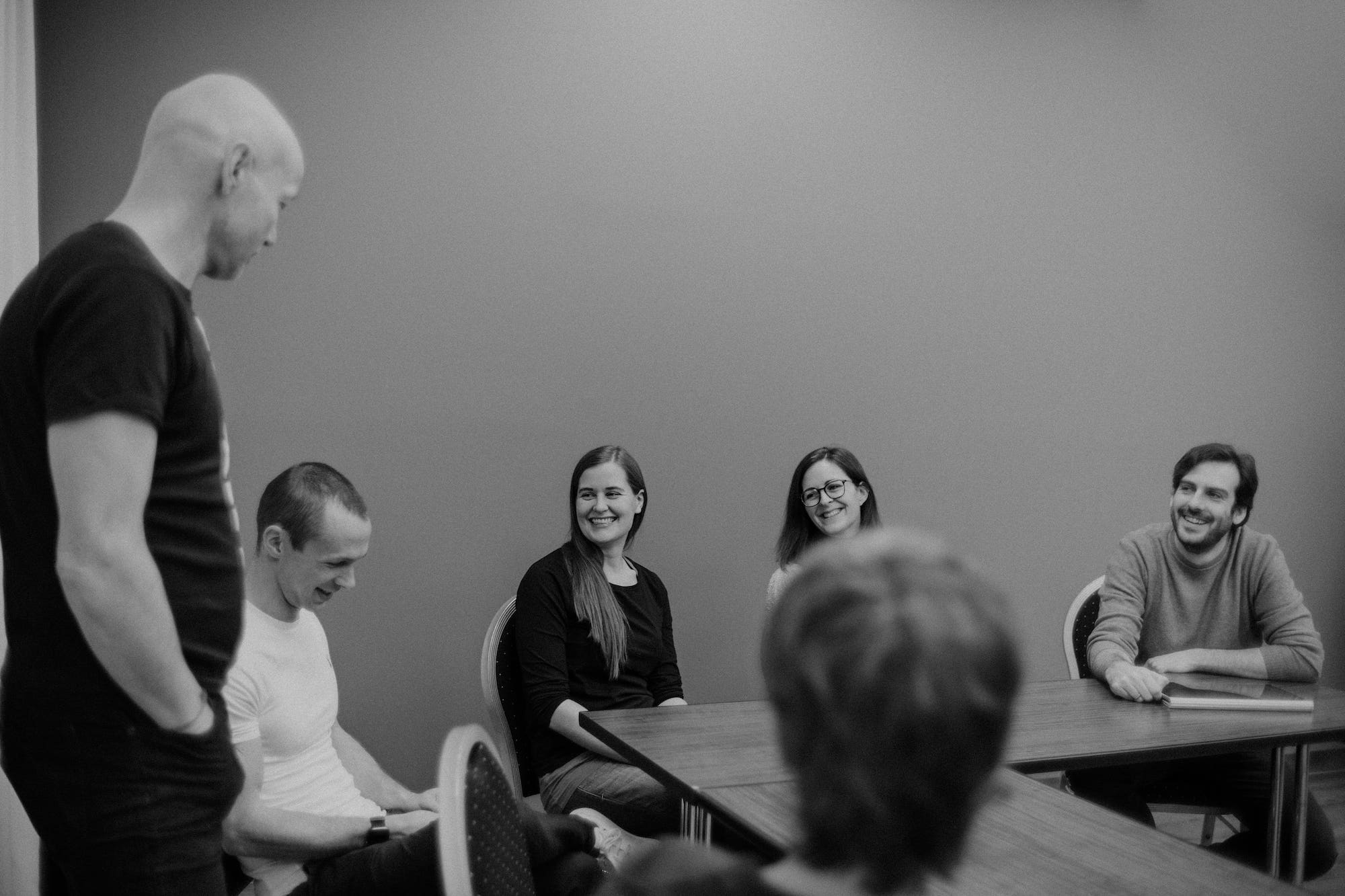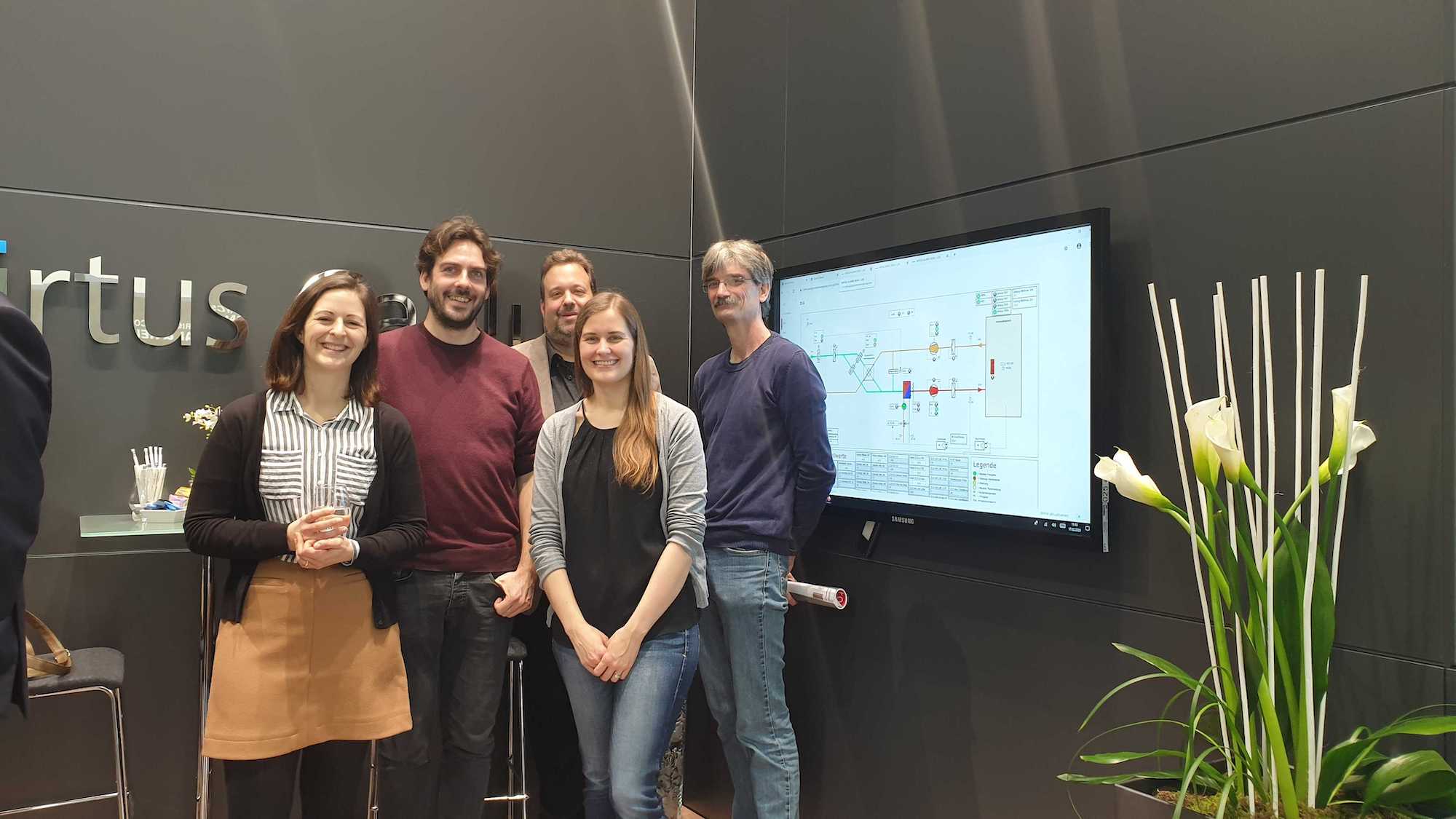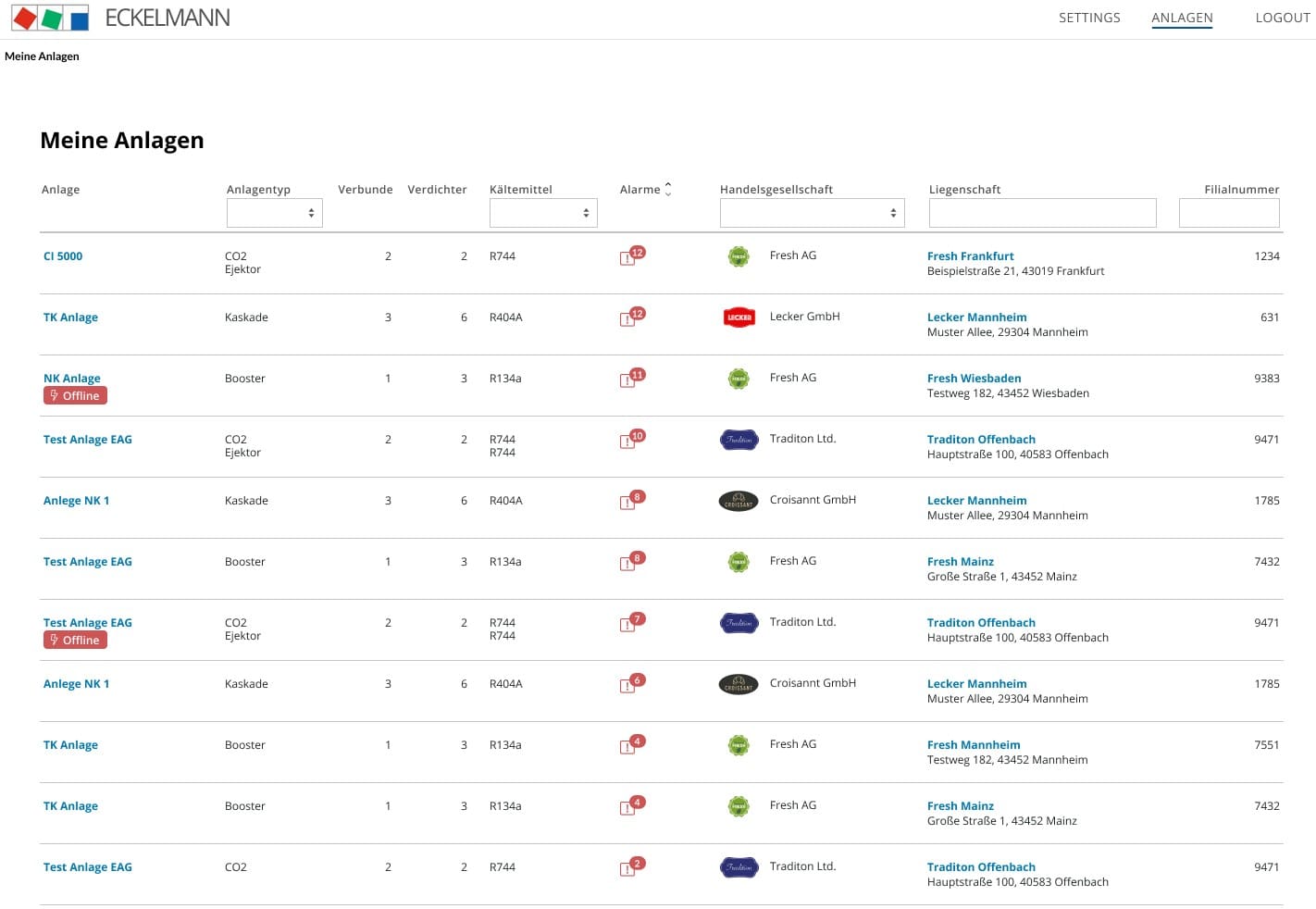
Diese Case Study ist auch auf Deutsch verfügbar
In the grocery sector, a gapless cooling chain is essential, but tricky – goods are continuously being taken out or restocked. Of course, all this activity must leave the refrigerators cold. That’s where the Wiesbaden company Eckelmann comes in. For more than 40 years, Eckelmann has been an automation partner and expert in mechanical and systems engineering all around the world. Its precise cooling controllers are also installed in many German grocery stores. To guarantee smooth functioning, service technicians need access to various kinds of data. With our modernization concept, we have provided support to Eckelmann and created a system that simplifies maintenance processes through location-independent near-time access.
In INNOQ, we have found the ideal partner for such an ambitious project. Collaboration in a team distributed across multiple locations, comprised of members of both companies, was uncharted territory for us; as were the design, development, and operation of a cloud application. We received optimal support in all areas and continue to profit from the cooperation. A cooperation that often felt as if we were all part of the same company, with all participants enthusiastically pursuing the same goals. It was a great time in a special project!
Matthias WolfHead of Product Development & Product Owner KGL, Eckelmann AG
The equipment room with the refrigeration plant of a supermarket can easily reach half the size of a shipping container. The cold generated there is distributed through pipes to the refrigerators in the supermarket. The cooling controllers in the refrigerators and the integrated control system in the equipment room work together to operate the control technology. They ensure that the refrigerators always have the right temperature. To prevent damage to goods, so-called remote service centers monitor a variety of data. This remote service is alerted, if any equipment signals a problem. For example, if an employee stacks the pizzas too high, thus impairing air circulation.

In such situations, it had been a problem for the service technicians to get all the important information. The only way to assess the severity of the incident was the time-consuming establishment of a connection to the supermarket to call up the necessary data. This was done via modem or ISDN using the historically evolved desktop application.
Ready for Refrigeration 4.0
To slim down the process and make it possible to call up the data regardless of location, the idea of a web portal was born. It would be the centralized location for the data needed by all supermarkets with Eckelmann equipment.
However, as an anti-pattern in an Internet-of-Things world, this would mean that each component manufacturer, e.g. of refrigerator fans, would have to work with its own IoT cloud. For each component, there would be a separate app or portal. Yet, all participants have the same goal – namely perfectly functioning refrigeration units. And that requires a holistic view of the cooling process in the unit.
Eckelmann wanted to solve this problem and began to plan a more efficient solution. The ambitious idea: An IoT cloud open to all the component manufacturers in the supermarket. To turn this idea into reality, we developed a software architecture that provided each manufacturer with its own identity. This facilitates incident management and teamwork. The first version of such a comprehensive portal component is the Virtus Alarm Desk, a hub for problems of all kinds. It controls and tracks the life cycle of malfunctions of various components and provides support to the service technicians in planning and prioritizing their work.
The platform for grocery retailers
The goal of the platform is to map all supermarkets with their installed components. Various stakeholders must be networked and have the ability to access the data of those devices. A stakeholder analysis determined that the following roles are relevant for the platform:
- Operating companies (supermarkets)
- Store managers
- Equipment manufacturers (e.g. refrigeration plant, bottle/can deposit machine, automatic bread maker)
- Service partner
The concept is consciously open, so that various kinds of services can be offered on the platform – even those in competition with one another. It was therefore important to define a common standard with various manufacturers. However, instead of standardizing only the data formats and thus forcing all the components into the same system, we defined interfaces for front-end integration. The software architecture developed by us thus guaranteed the identity of each individual manufacturer – each with its own user interface elements integrated in the portal. In this way, each partner can fully exploit the strengths of its components.
Whether a malfunction in an automatic bread maker or a refrigeration plant, the software architecture makes it possible to activate the respective roles. In turn, each role has an individual view of the data values it needs, which converge in the platform. Each one now has all the relevant information at a glance. Whether store manager, remote service technician, or energy manager.
Here’s what makes the platform so special:
- A flexible platform for all manufacturers
- All services function independently of one another
- View of the data is optimized for each stakeholder
- User-friendly user interfaces
- Open and especially reliable software architecture
- No cumbersome access based on individual stores: all equipment and values at a glance
Now available on the refrigerator shelf: “Virtus Basic Desk”
Of course there is also the innovative, proprietary app Virtus Basic Desk, which also has its home on the new platform. It now enables service technicians, energy managers, and employees of the supermarket operator to work from anywhere via web browser, instead of using the outmoded desktop application.

Designing apps requires a certain degree of finesse. For that reason, our team first wanted to understand precisely how people work at Eckelmann and in the remote service centers. They then built various prototypes through user story mapping and also identified and revolutionized all processes. Now everything runs smoothly: each employee has an intuitive and personalized user experience.

The confusing jumble of raw data has been eliminated. All information is harmonized, analyzed, and appealingly visualized by the software. The installed components and their values can be controlled and monitored conveniently.
However, our team has also collected other perspectives and developed additional ideas for the future. To make sure that employees do not have to orient themselves using old patterns, a maps function will also be added to the app. It shows each store as a floor plan, thus ensuring the necessary overview. If there is a problem, the technicians can see immediately which unit needs support. The overall vision: it is now easier than ever to network supermarkets.
Technical highlights
- Platform with open software architecture for minimum standardization and maximum flexibility
- Front-end integration and transclusion of web contents
- Resilient, modularly structured data ingestion pipeline with MQTT and Kafka
- Thanks to containerization, components can be operated on-premises and in cloud environments
- Semantic raw data enhancement to harmonize IoT data from different equipment and firmware versions
- Technology stack: Spring Boot, Complate, InfluxDB, PostgreSQL, Kafka, Akka, HiveMQ, Kubernetes, Azure, Terraform
